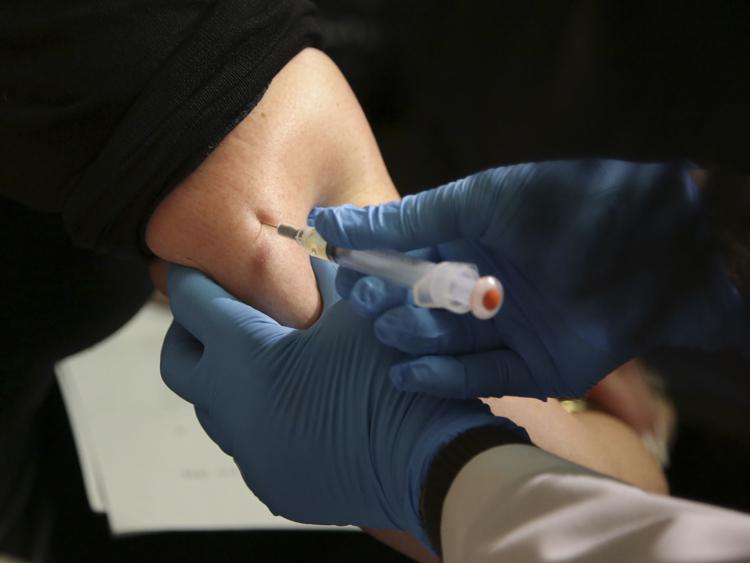NEW YORK — U.S. measles cases have surged again and are on pace to set a record for most illnesses in 25 years.
Health officials on Monday said 555 measles cases have been confirmed so far this year, up from 465 a week ago. A case of measles in northeast Iowa was the state’s first since 2011.
While 20 states have reported cases, New York has been the epicenter.
Also on Monday, the World Health Organization reported that globally there are four times as many measles cases so far this year as there were at the same time last year.
Measles: Symptoms, how to treat it and ways to prevent it
Measles — a highly contagious disease — is a virus that lives in nose and throat mucus, and it spreads via coughing and sneezing. If one person has it, nine out of 10 non-immune people close to the infected individual will also get sick.
The virus can survive for up to two hours in the airspace where an infected person coughed or sneezed. If someone breathes in contaminated air or touches an infected surface and then touches his or her eyes, nose or mouth, he or she will become infected.
Measles onset and symptoms
Measles symptoms will begin to show seven to 14 days after someone is infected. The early symptoms of measles include a high fever, cough, runny nose and red, watery eyes. Two to three days after symptoms appear, tiny white spots — known as Koplik’s spots — may appear in the mouth.
Three to five days after symptoms appear, a rash will break out. The rash begins as flat red spots on the face at the hairline. They will then spread downward to the neck, trunk, arms, legs and feet. Small red spots may also appear on top of the flat red spots. As the spots move down the body, they may join together and create large patches of dry, itchy skin. When the rash appears, fever temperatures may spike to over 104 degrees.
Many illnesses have similar early symptoms as measles, but the rash is typically the strongest indication of a measles infection. Infected individuals can spread to others from four days before the rash appears to four days after the rash appears.
How to treat measles
The best protection from measles is the Measles-Mumps-Rubella vaccine. There are two doses. The first dose is administered between 12 and 15 months old. The second dose is given between 4 and 6 years old. This second dose is often administered before starting kindergarten.
There is no specific treatment for measles, but some measures may be taken to prevent or lessen infection.
• Post-exposure vaccination: non-immunized people (including infants) may be given the MMR vaccine with 72 hours of exposure. If measles still develops, it is often shorter-lived and less severe.
• Immune globulin (IG): Infants, pregnant women and people with weakened immune systems who are exposed may receive an injection of antibodies (proteins). When administered with six days of exposure, it can prevent measles or lessen symptom severity.
Medications, such as over-the-counter acetaminophen (Tylenol), ibuprofen (Advil, Motrin) and naproxen (Aleve) may help reduce fever and ease pain. Antibiotics are not useful in the treatment of a measles virus infection, but they may be needed if a secondary bacterial infection develops, such as an ear infection or pneumonia.
Do not give your child aspirin, as it has been linked to Reyes Syndrome — a rare and life-threatening condition — in children.
Some home comfort measures include:
• Take it easy. Make sure to rest and relax during the illness.
• Sip something. Drink plenty of fluids to help avoid dehydration from the fever and sweating.
• Breathe easy. Use a humidifier to relieve the cough and sore throat.
• Rest your eyes. Many people with measles find bright light bothersome, so keep the lights low, avoid screen time and wear sunglasses if needing to go out of the house for an appointment.
If you or your child has measles, stay in contact with your physician as the illness progresses. Measles can be serious; it is more than just a rash and fever. Children younger than 5 and adults older than 20 are more likely to suffer from complications, and one in four infected persons will be hospitalized.
If you suspect a measles infection, please call your clinic and let staff know so they can ensure proper safety measures for your child and other patients by having masks used at the front entrance of the clinic.
















